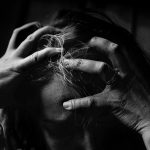Signs and symptoms of panic disorder
Many people experience panic attacks without further episodes or complications. There is little reason to worry if you’ve had just one or two panic attacks. However, some people who’ve experienced panic attacks go on to develop panic disorder. Panic disorder is characterized by repeated panic attacks, combined with major changes in behavior or persistent anxiety over having further attacks.
Signs and symptoms of panic disorder
You may be suffering from panic disorder if you:
Experience frequent, unexpected panic attacks that aren’t tied to a specific situation
Worry a lot about having another panic attack
Are behaving differently because of the panic attacks, such as avoiding places where you’ve previously panicked
While a single panic attack may only last a few minutes, the effects of the experience can leave a lasting imprint. If you have panic disorder, the recurrent panic attacks take an emotional toll. The memory of the intense fear and terror that you felt during the attacks can negatively impact your self-confidence and cause serious disruption to your everyday life. Eventually, this leads to the following panic disorder symptoms:
Anticipatory anxiety – Instead of feeling relaxed and like yourself in between panic attacks, you feel anxious and tense. This anxiety stems from a fear of having future panic attacks. This “fear of fear” is present most of the time, and can be extremely disabling.
Phobic avoidance – You begin to avoid certain situations or environments. This avoidance may be based on the belief that the situation you’re avoiding caused a previous panic attack. Or you may avoid places where escape would be difficult or help would be unavailable if you had a panic attack. Taken to its extreme, phobic avoidance becomes agoraphobia.
Panic disorder with agoraphobia
Agoraphobia was traditionally thought to involve a fear of public places and open spaces. However, it is now believed that agoraphobia develops as a complication of panic attacks. With agoraphobia, you’re afraid of having a panic attack in a situation where escape would be difficult or embarrassing. You may also be afraid of having a panic attack where you wouldn’t be able to get help.
Because of these fears, you start avoiding more and more situations. For example, you might begin to avoid crowded places such as shopping malls or sports arenas. You might also avoid cars, airplanes, subways, and other forms of travel. In more severe cases, you might only feel safe at home.
Situations or activities you may avoid if you have agoraphobia:
Being far away from home
Going anywhere without the company of a “safe” person
Physical exertion (because of the belief that it could trigger a panic attack)
Going to places where escape is not readily available (e.g. restaurants, theaters, stores, public transportation)
Driving
Places where it would be embarrassing to have a panic attack, such as a social gathering
Eating or drinking anything that could possibly provoke panic (such as alcohol, caffeine, or certain foods or medications)
Adapted from: American Academy of Family Physicians
Although agoraphobia can develop at any point, it usually appears within a year of your first recurrent panic attacks.
Causes of panic attacks and panic disorder
Although the exact causes of panic attacks and panic disorder are unclear, the tendency to have panic attacks runs in families. There also appears to be a connection with major life transitions such as graduating from college and entering the workplace, getting married, and having a baby. Severe stress, such as the death of a loved one, divorce, or job loss can also trigger a panic attack.
Panic attacks can also be caused by medical conditions and other physical causes. If you’re suffering from symptoms of panic, it’s important to see a doctor to rule out the following possibilities:
Mitral valve prolapse, a minor cardiac problem that occurs when one of the heart’s valves doesn’t close correctly.
Hyperthyroidism (overactive thyroid gland)
Hypoglycemia (low blood sugar)
Stimulant use (amphetamines, cocaine, caffeine)
Medication withdrawal
Treatment for panic attacks and panic disorder
Panic attacks and panic disorder are treatable conditions. They can usually be treated successfully with self-help strategies or a series of therapy sessions.
Cognitive Behavioral Therapy ( CBT)
Cognitive behavioral therapy is generally viewed as the most effective form of treatment for panic attacks, panic disorder, and agoraphobia. Cognitive behavioral therapy focuses on the thinking patterns and behaviors that are sustaining or triggering the panic attacks. It helps you look at your fears in a more realistic light.
For example, if you had a panic attack while driving, what is the worst thing that would really happen? While you might have to pull over to the side of the road, you are not likely to crash your car or have a heart attack. Once you learn that nothing truly disastrous is going to happen, the experience of panic becomes less terrifying.
Exposure therapy for panic attacks and panic disorder
In exposure therapy for panic disorder, you are exposed to the physical sensations of panic in a safe and controlled environment, giving you the opportunity to learn healthier ways of coping. You may be asked to hyperventilate, shake your head from side to side, or hold your breath. These different exercises cause sensations similar to the symptoms of panic. With each exposure, you become less afraid of these internal bodily sensations and feel a greater sense of control over your panic.
If you have agoraphobia, exposure to the situations you fear and avoid is also included in treatment. As in exposure therapy for specific phobias, you face the feared situation until the panic begins to go away. Through this experience, you learn that the situation isn’t harmful and that you have control over your emotions.
Medication treatment for panic attacks and panic disorder
Medication can be used to temporarily control or reduce some of the symptoms of panic disorder. However, it doesn’t treat or resolve the problem. Medication can be useful in severe cases, but it should not be the only treatment pursued. Medication is most effective when combined with other treatments, such as therapy and lifestyle changes, that address the underlying causes of panic disorder.
Self-help tips for panic attacks and panic disorder
When it comes to panic attacks, professional treatment and therapy can make a big difference. But there are many things you can do to help yourself, too:
- Learn about panic. Simply knowing more about panic can go a long way towards relieving your distress. So read up on anxiety, panic disorder, and the fight-or-flight response experienced during a panic attack. You’ll learn that the sensations and feelings you have when you panic are normal and that you aren’t going crazy.
Avoid smoking and caffeine. Smoking and caffeine can provoke panic attacks in people who are susceptible. As a result, it’s wise to avoid cigarettes, coffee, and other caffeinated beverages. Also be careful with medications that contain stimulants, such as diet pills and non-drowsy cold medications. - Learn how to control your breathing. Hyperventilation brings on many sensations (such as lightheadedness and tightness of the chest) that occur during a panic attack. Deep breathing, on the other hand, can relieve the symptoms of panic. By learning to control your breathing, you develop a coping skill that you can use to calm yourself down when you begin to feel anxious. If you know how to control your breathing, you are also less likely to create the very sensations that you are afraid of.
- Practice relaxation techniques. When practiced regularly, activities such as yoga, meditation, and progressive muscle relaxation strengthen the body’s relaxation response—the opposite of the stress response involved in anxiety and panic. And not only do these relaxation practices promote relaxation, but they also increase feelings of joy and equanimity. So make time for them in your daily routine.
More help for panic attacks and panic disorders
Next step…
Overcoming panic: Exploring effective therapies. If you’re suffering from panic disorder, therapy can teach you how to prevent and cope with panic attacks. Even a short course of treatment can help! Many people experience a drastic reduction in symptoms within eight to ten treatment sessions.
Self-Help for Panic Attacks – Use the left-hand menu on this website to navigate through a wealth of self-help tips for coping with and reducing panic attacks. (Anxieties.com)
Overcoming Agoraphobia – Describes helpful cognitive techniques for overcoming agoraphobia, how to create “safe bases” outside the home, and what to do if you have a panic attack. (Agoraphobia and Panic Disorder Foundation)






